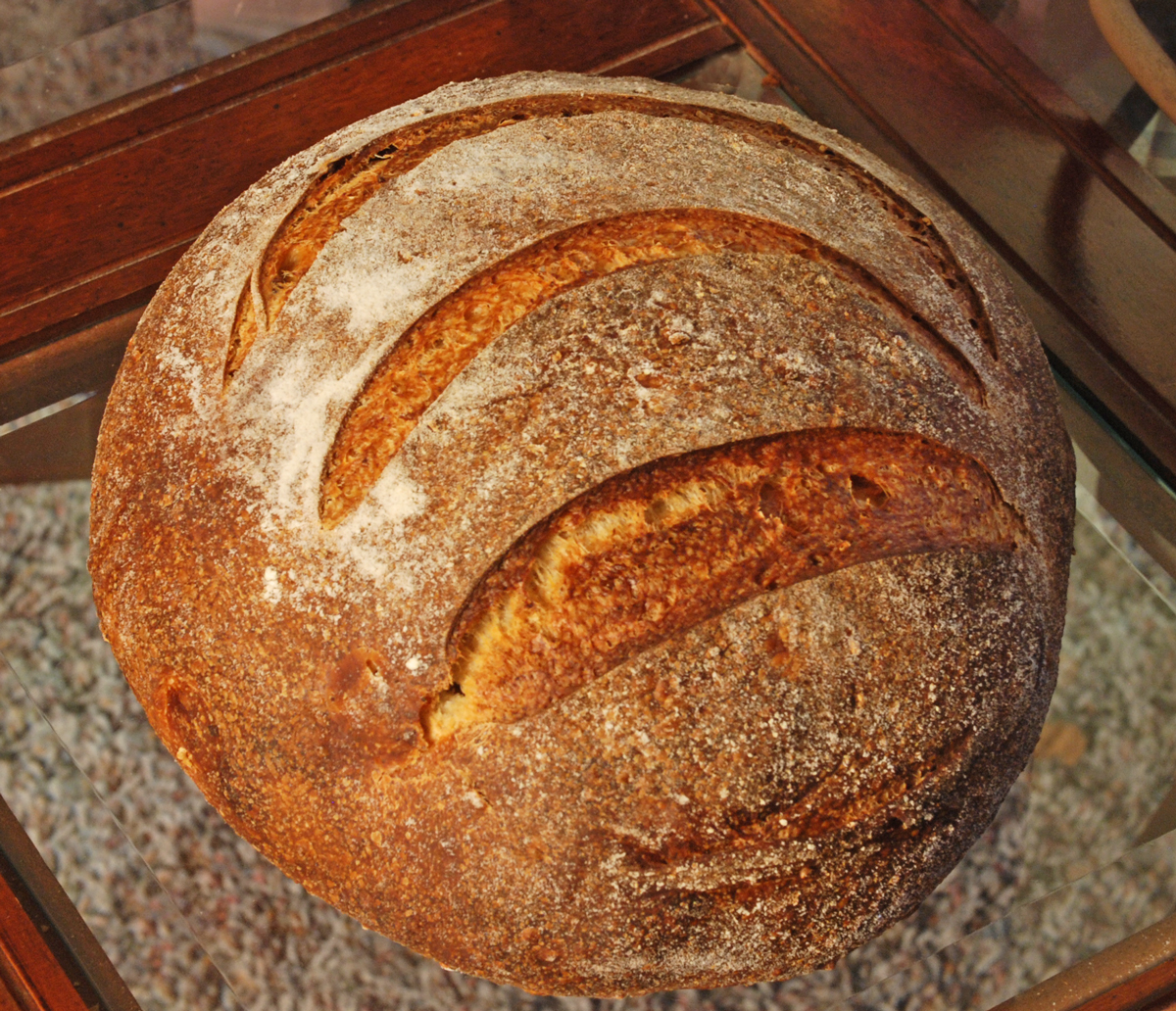 I wanted to make a bread to bring into my new office and my wife had just cooked some bacon for our grilled cheese with bacon sandwiches so naturally I needed to use the left-overs in a bread. I started out with the Italian Country Bread from Peter Reinhart's BBA book and changed most of the ingredients while adding a few additional as well.
I wanted to make a bread to bring into my new office and my wife had just cooked some bacon for our grilled cheese with bacon sandwiches so naturally I needed to use the left-overs in a bread. I started out with the Italian Country Bread from Peter Reinhart's BBA book and changed most of the ingredients while adding a few additional as well.
I used my AP starter instead of a biga and I added some maple syrup instead of sugar. The combination of flours I used along with some cracked wheat and wheat germ turned this into a great rustic bread with a nice chewy crust and open crumb.
My only regret is I didn't double the recipe so I had an extra loaf for myself. The new office crowd devoured it and commented that I was welcome to bring in additional bread whenever I visited.
Ingredients
453 grams 65% Hydration Starter Refreshed
84 grams First Clear Flour
84 grams Sir Lancelot High Gluten Flour (KAF)
84 grams Durum Flour
28 grams European Style Flour (KAF)
28 grams Potato Flour
24 grams Wheat Germ
16 grams Cracked Wheat
18 grams Olive Oil
18 grams Maple Syrup
226 grams Water at room temperature
11 grams Sea Salt or Table Salt
36 grams Chopped Cooked Bacon (feel free to add more if desired)
Directions
Using your stand mixer or by hand, mix the flours and cracked wheat and wheat germ together with the water and maple syrup for 1 minute just until it starts to come together. Let the dough autolyse for 20 minutes to an hour. This will let the flour absorb the water.
Next, add the starter by breaking it up into pieces and mix along with the salt for 3 minutes. After 3 minutes add the bacon to incorporate it into the dough and mix for 1 more minute. You should end up with a slightly sticky ball of dough that has started to become smooth.
Remove dough to your lightly floured work surface and need for 1 minute and form a ball.
Leave uncovered for 10 minutes.
Do a stretch and fold and form into a ball again and cover with a clean moist cloth or oiled plastic wrap.
After another 10 minutes do another stretch and fold and put into a lightly oiled bowl that has enough room so the dough can double overnight.
Leave the covered dough in your bowl at room temperature for 2 hours and then put it in your refrigerator overnight or up to 2 days.
When ready to bake the bread, take the bowl out of your refrigerator and let it rest at room temperature for 2 hours. After 2 hours shape the dough as desired being careful not to handle the dough too roughly so you don't de-gas it. Place it in your bowl, banneton or shape into baguettes.
Let it sit at room temperature for 2 hours covered with oiled plastic wrap or a wet cloth.
Pre-heat oven with baking stone (I use one on bottom and one on top shelf of my oven), to 500 degrees F.
Slash loaves as desired and place empty pan in bottom shelf of oven.

Pour 1 cup of very hot water into pan and place loaves into oven.
Lower oven to 450 Degrees and bake for 25 - 35 minutes until bread is golden brown and internal temperature reaches 200 degrees.
Let cool on cooling rack for at least 2 hours and enjoy!
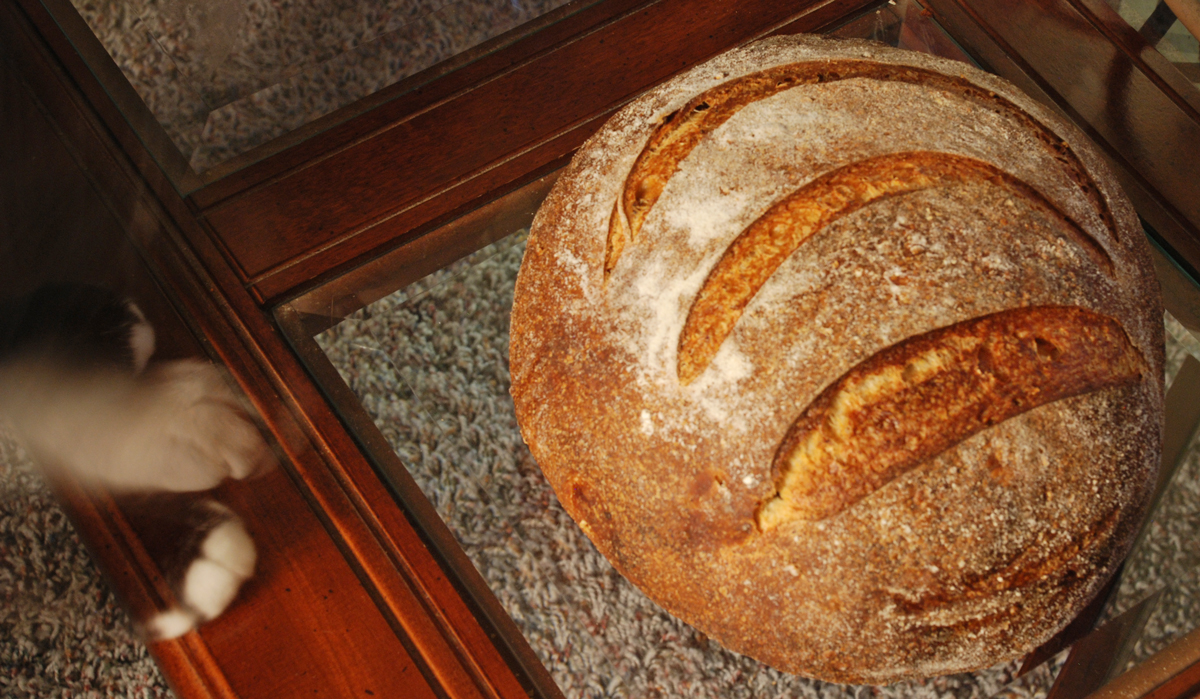
- I think I have a ghost in my house...or a hungry cat!

- Crust and Crumb came out very tasty







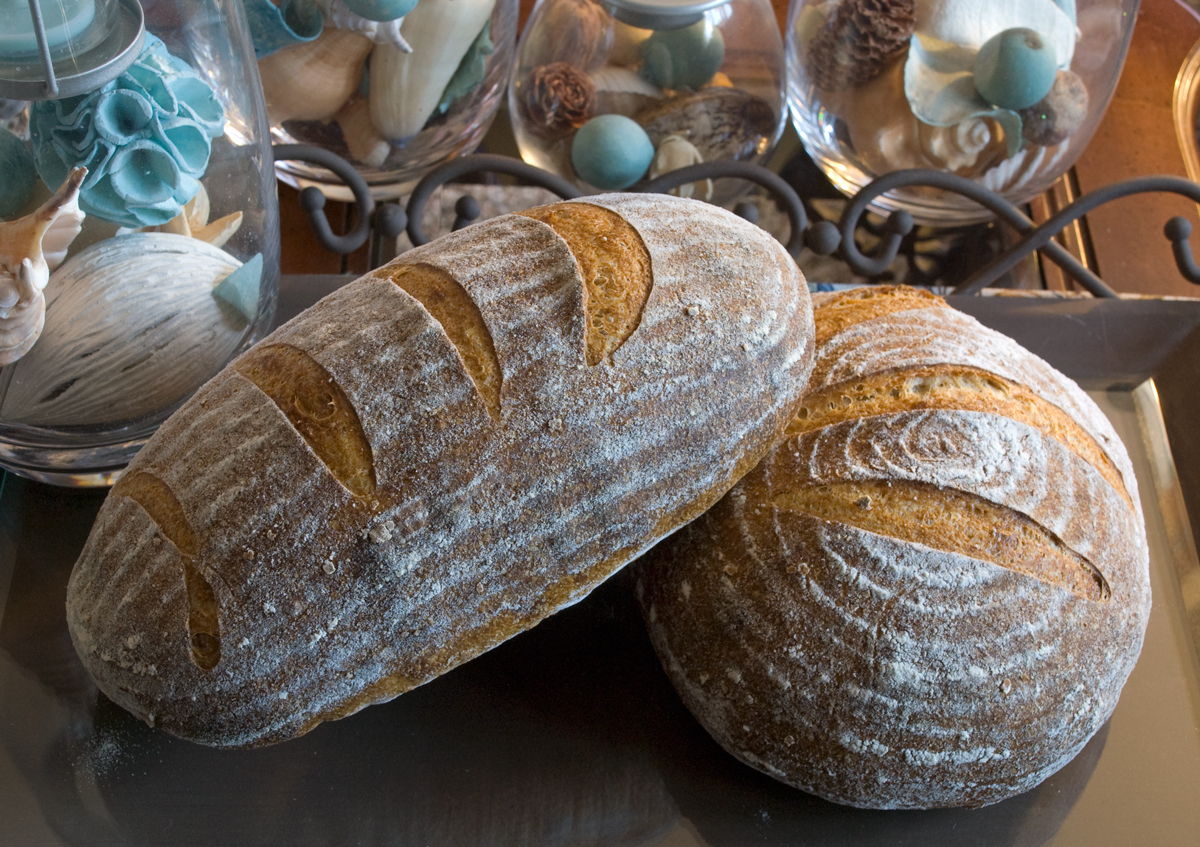
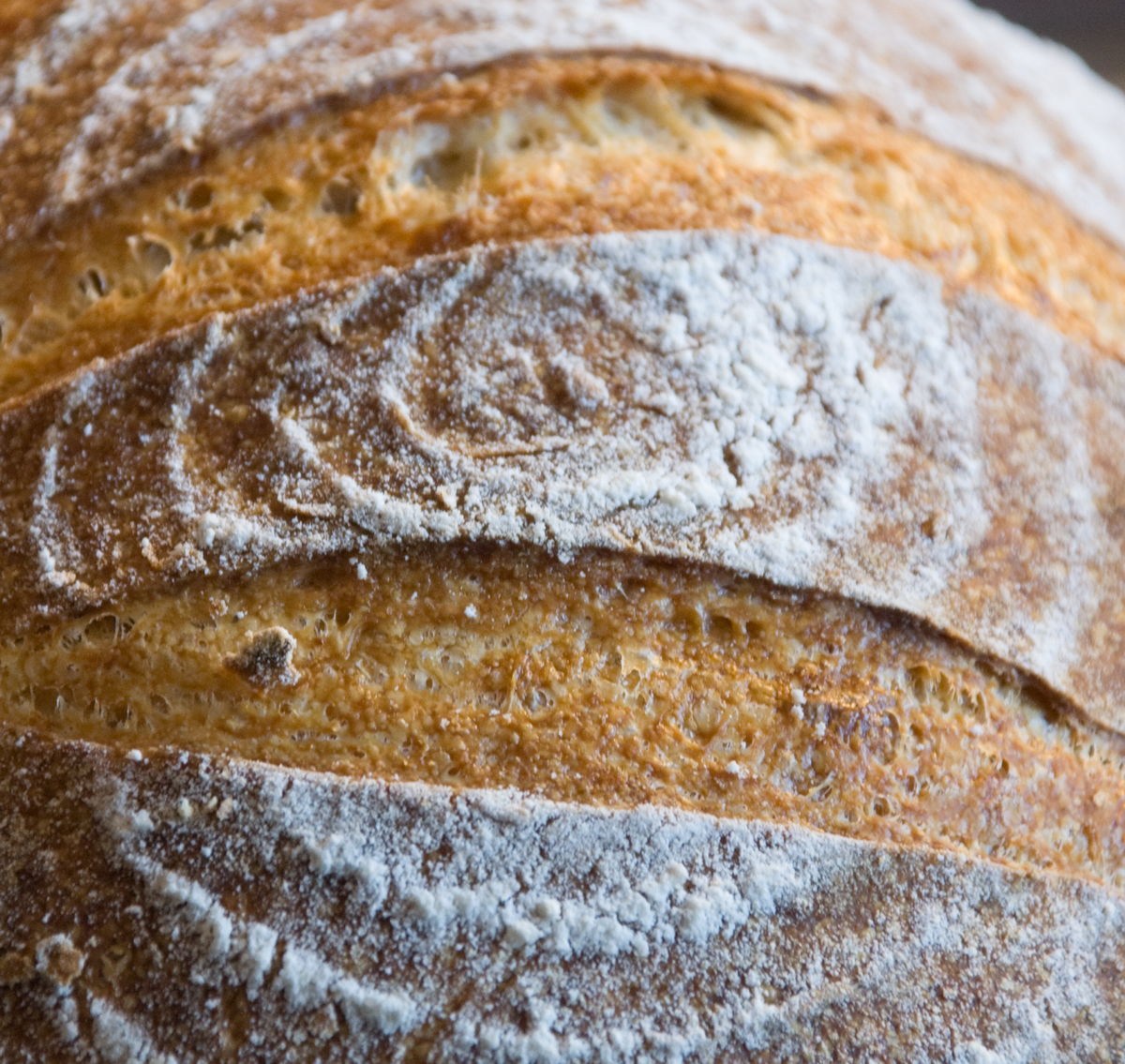
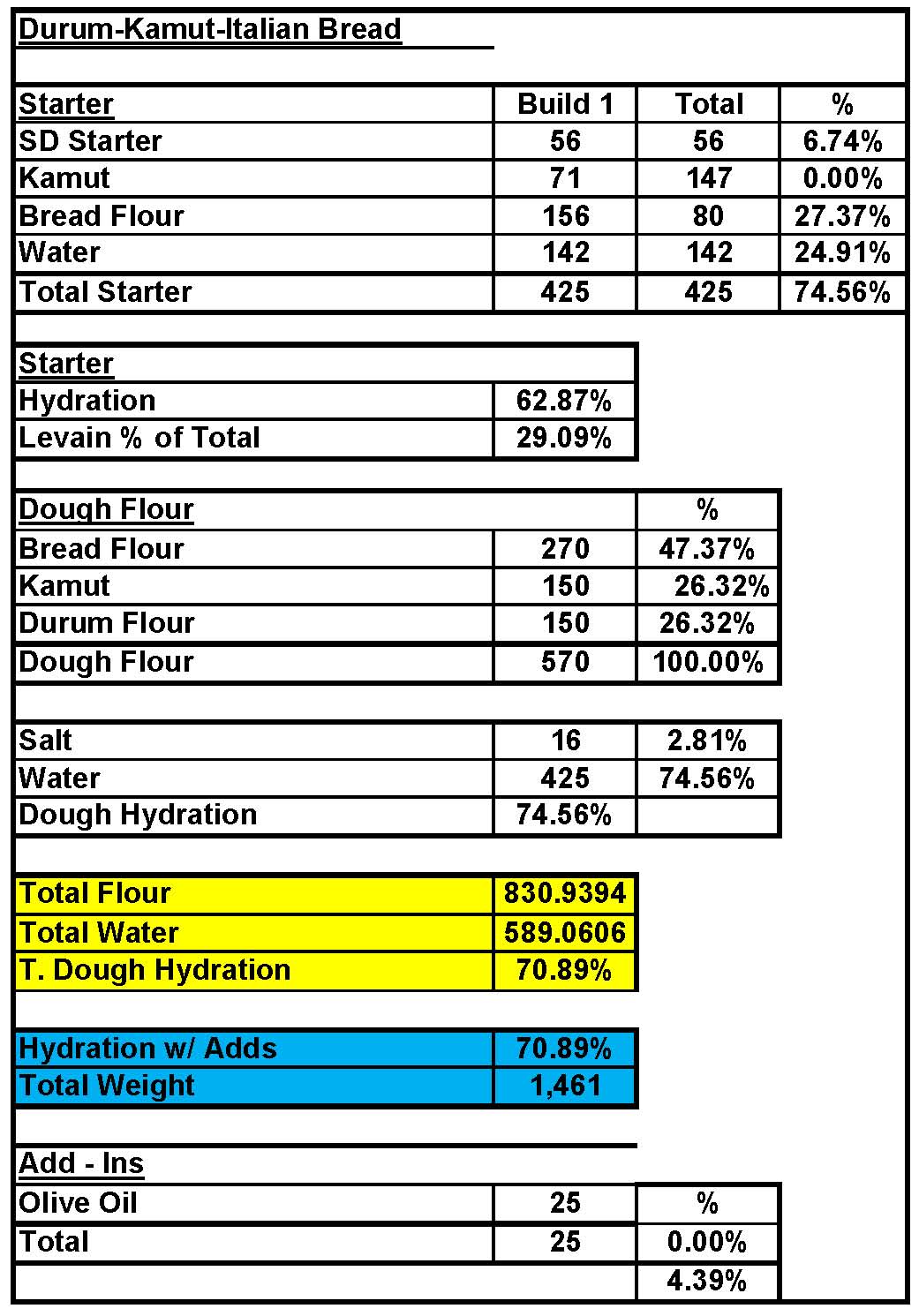
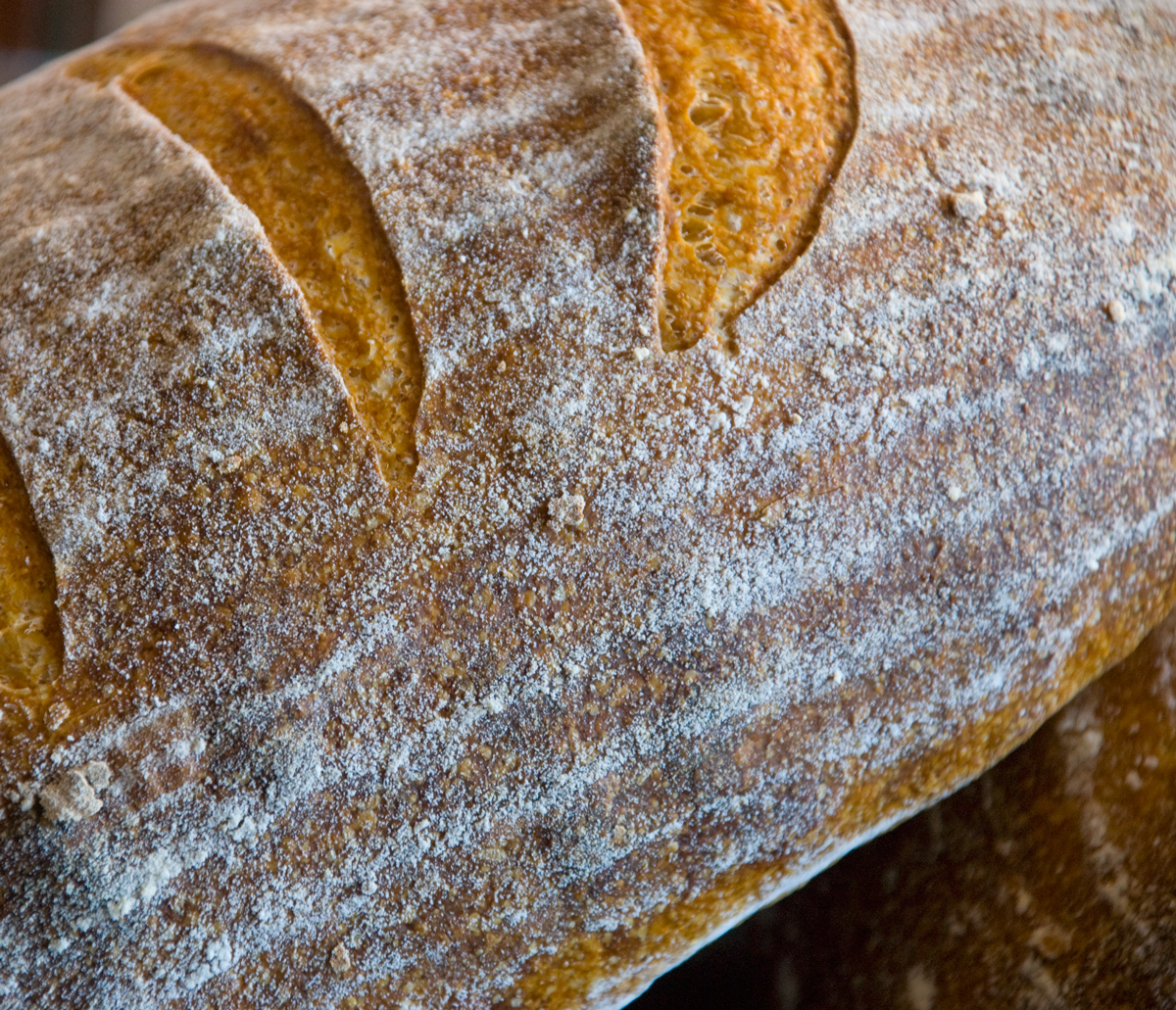
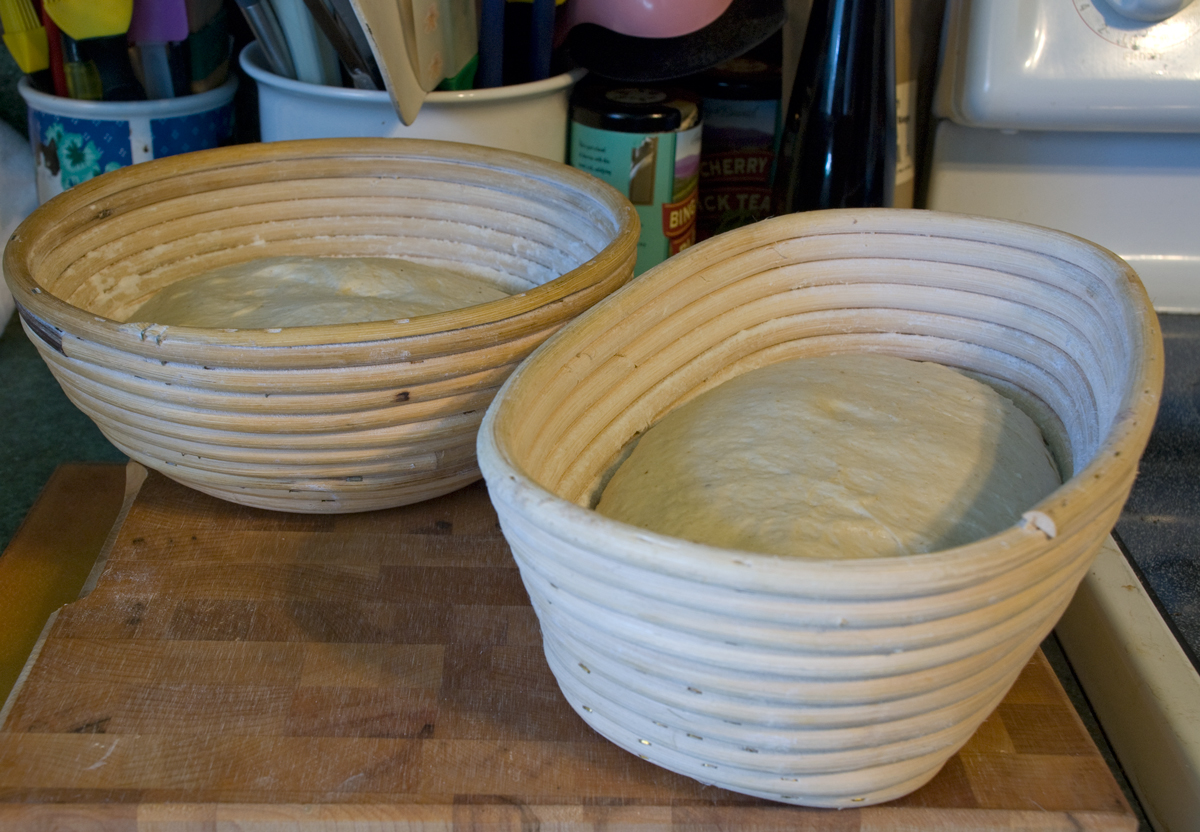
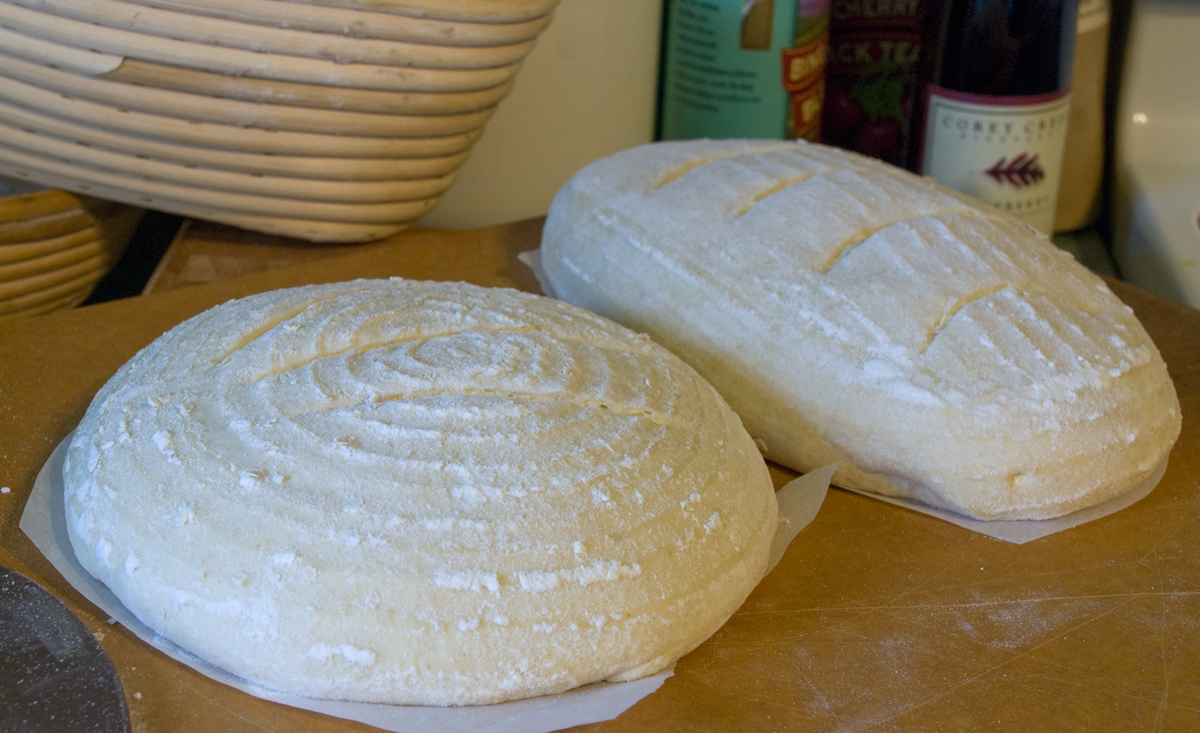











 I wanted to make a bread to bring into my new office and my wife had just cooked some bacon for our grilled cheese with bacon sandwiches so naturally I needed to use the left-overs in a bread. I started out with the Italian Country Bread from Peter Reinhart's BBA book and changed most of the ingredients while adding a few additional as well.
I wanted to make a bread to bring into my new office and my wife had just cooked some bacon for our grilled cheese with bacon sandwiches so naturally I needed to use the left-overs in a bread. I started out with the Italian Country Bread from Peter Reinhart's BBA book and changed most of the ingredients while adding a few additional as well.









